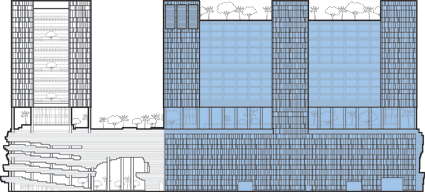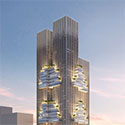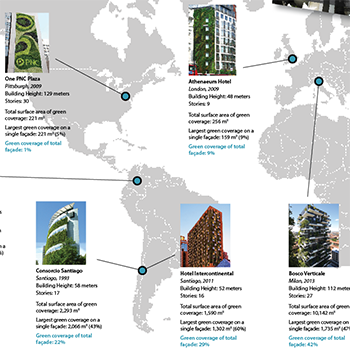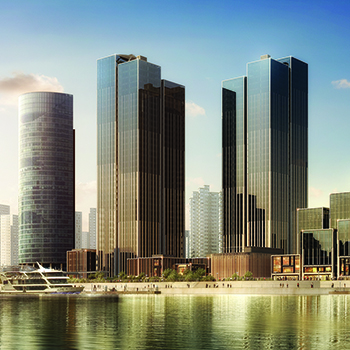Filter by
You must be a CTBUH Member to view this resource.

PARKROYAL COLLECTION Pickering
PARKROYAL on Pickering
Complex
Completed
hotel / office
367
104
Note: Only buildings that have GPS coordinates recorded are displayed.
|
RANK
|
Name
|
Completion
|
Height
|
Floors
|
Function
|
|---|---|---|---|---|---|
| 1 | PARKROYAL COLLECTION Pickering | 2013 |
89 m / 292 ft |
16 | Hotel |
| 1 | PARKROYAL COLLECTION Pickering Office Building | 2013 |
89 m / 292 ft |
14 | Office |
2013 CTBUH Awards
2015 CTBUH Awards
22 June 2016 - Event

03 November 2016
Dr. Cheong Koon Hean is an architect and urban planner who has been credited with shaping much of Singapore’s urban landscape. Throughout her career, she...

16 October 2023
Liam Wee Sin, Patrick Bellew, Sir Peter Cook, Carol Willis
In this special extended edition of Talking Tall, CTBUH Editor Daniel Safarik talks to four people with significant relevance to the conference theme, “Humanizing High...

03 November 2016
Dr. Cheong Koon Hean is an architect and urban planner who has been credited with shaping much of Singapore’s urban landscape. Throughout her career, she...

17 October 2016
This presentation proposes an alternative to the continuing implementation of unsustainable 20th century urban planning models. By using WOHA’s mini-city projects and proposals as prototypes...

17 October 2016
Monday, October 17, 2016. Shenzhen, China. long Xiu, Chairman, Architectural Society of China; Mun Summ Wong, Woha; Antony Wood, Executive Director, CTBUH answer questions at...

17 March 2016
Mun Summ Wong & Richard Hassell, WOHA Architects, discuss vertical greenery and PARKROYAL on Pickering, the 2015 CTBUH Urban Habitat Award Winner. View the extended...

12 November 2015
Nicholas E. Billotti, Chairman, Turner International, Michael George, Regional Director, JLL, Alberto Alarcon, Chief Executive Officer, HOLEDECK, Maria Ramirez, Managing Director, HOLEDECK, and Mun Summ...

12 November 2015
Mun Summ Wong, Founding Director, WOHA Architects, speaks at the 14th Annual Best Tall Building Symposium in a presentation entitled "Blurring the Boundary Between Building...

12 November 2015
Mun Summ Wong, Founding Director, & Richard Hassell, Director, WOHA Architects, are interviewed by Chris Bentley regarding the 2015 CTBUH Urban Habitat Award Winner, PARKROYAL...

18 September 2014
Asia’s rapidly growing metropolises demand an alternative strategy for city planning and architecture that addresses the need to live appropriately and sustainability with our tropical...

16 October 2023
Liam Wee Sin, Patrick Bellew, Sir Peter Cook, Carol Willis
In this special extended edition of Talking Tall, CTBUH Editor Daniel Safarik talks to four people with significant relevance to the conference theme, “Humanizing High...
sumner.jpg)
04 February 2016
Daniel Safarik, CTBUH
A growing number of tall buildings recognized by the CTBUH, through its international awards programs and research, are noteworthy not so much because of their...

16 September 2014
CTBUH Research
The latest CTBUH technical guide, Green Walls in High-Rise Buildings, provides a thorough investigation of the methods used around the world for implementation of vertical...

14 September 2014
Daniel Safarik, CTBUH
The survival of humanity on this planet relies on a radical repositioning of our cities. In the face of unprecedented global population growth, urbanization, pollution...

01 August 2009
Mun Summ Wong & Richard Hassell, WOHA
High-rise, high-density living has been embraced as a positive accommodation solution for many millions of people living in Asia's growing urban metropolis. This paper outlines...
Subscribe below to receive periodic updates from CTBUH on the latest Tall Building and Urban news and CTBUH initiatives, including our monthly newsletter. Fields with a red asterisk (*) next to them are required.
View our privacy policy